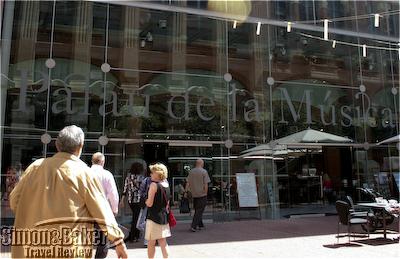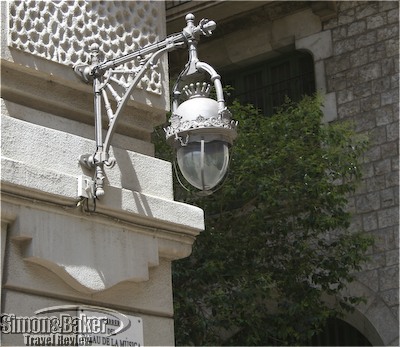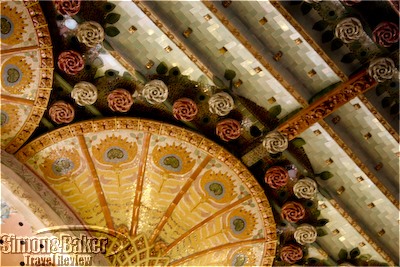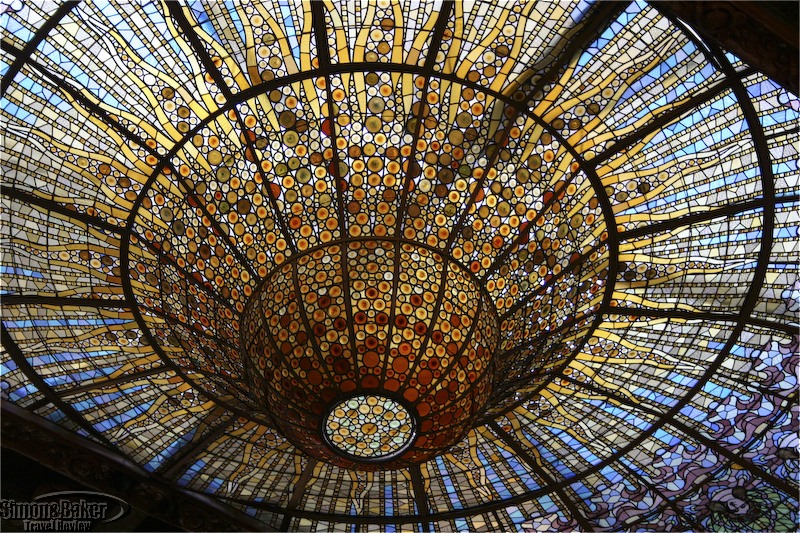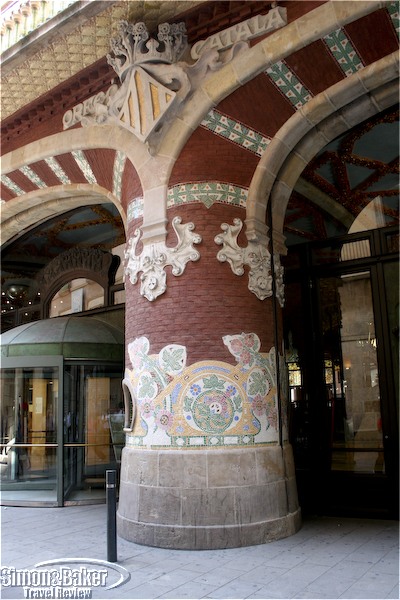
With seating for 2,100 the Palau, the only Modernist UNESCO World Heritage Building (since 1997), was intimate yet large enough to be self sustaining as a concert venue. It offered a serious reverence for the music it hosted within a warm, playful and art filled setting. The diverse cross section of visitors and concert goers I saw that day was evidence of its broad appeal.
Three hundred concerts were held at the Palau annually and nearly 200,000 curious people toured its facilities during the day. In addition to attending an evening concert, I indulged my curiosity with a daytime tour. I was rewarded for my efforts with the opportunity to explore the theater’s main hall somewhat at my leisure (compared to the limitations existent during a full concert hall). The tour and concert experience confirmed my first impression: that the theater was a special place even within a city that seemed enamored with art and architectural design. The next time I am in Barcelona I plan to attend another concert at the Palau de la Música Catalana.
Established The Palau was built between 1905 and 1908 under the supervision of Luís Domenech i Montaner, an architect, with funding from private donations. In 2004, the most recent renovation took place. At that time the Petit Palau, Plaza del Palau and Restaurante El Mirador were added.
Handicapped Access The Palau welcomed attendees with handicaps. Handicapped access was via C/ Palau de la Música, 4-6. The staff recommended that handicapped visitors contact the venue in advance at + 34 902 442 882.
Location The concert hall is in Ciutat Vella, the city’s historic quarter.
Owned-Managed The Palau de la Música Catalana was owned by Orfeó Català, a one hundred year old nonprofit association dedicated to the promotion of Catalan culture, especially music and in particular choral music. Beginning in February 2011 the general manager of the Palau was Joan Oller.
Size The 14,749 square meter property housed a ten story structure, seven stories above ground and three basement levels. It had seating for 2,146 people in the main hall and 538 in the Petit Palau. One hundred twenty staff worked at the Palau.
Transportation A taxi was the best way to reach the theater. Public transportation options included buses and the subway. It was possible to take bus lines 17, 19, 40 and 45 and metro lines I and IV stopping at the Urquinaona Station.
The rectangular building, equal in height and width, was set around a semicircular stage and characterized by a fantasy ode to nature decorative style. Inside the main hall a glance upward revealed a striking stained glass skylight in the form of an inverted dome featuring a sun and forty women’s faces. The other side of the main hall adjacent to the main facade was dedicated to Luís Millet, founder of the Orfeó Catalá. The two story tall area, thought simple by comparison to the main section, stood out thanks to its large stained glass windows with floral motifs. Through the windows it was possible to see the 14 columns, each with distinctive floral decorations, of the building facade.
The skylight, ceramic mosaics and large side windows filled the room with light. Noteworthy were eccentric lamps, columns with floral motifs, music themed sculptures, the work of Dídac Masana and Pau Gargallo, and music muses set atop red mosaic, the work of Eusebi Arnau and Lluís Bru respectively. The entrance foyer housed a cafe and bar and highlighted open brickwork, ceramic accents on the ceiling and the original design by Domenech i Montaner.
Reviewers Article and Photos by Elena del Valle
Would You Visit This Attraction Again Yes
Contact Information
- C/ Palau de la Música
- 4-6. 08003 Barcelona
- Spain
- + 34 902 442 882
- http://wwww.palaumusica.org/Home/seccion=30&idioma=en_GB.do
